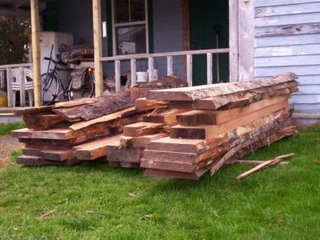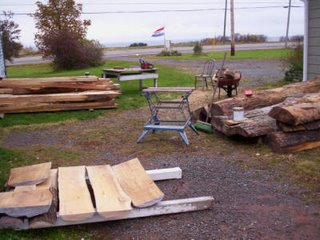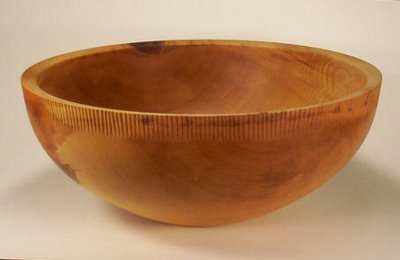This month I have been doing little else but turn bowls. I had accumulated over one hundred roughed out bowl blanks and they were beginning to swamp my storage space, so I thought it would be a good idea to take advantage of this quiet time of year to get them turned into finished bowls.
Unfortunately they didn't all make the grade. A couple had split while drying; possibly I had left them too thick, and they weren't able to warp as they dried, and the stress caused them to split apart. Another was an error on my part and the bottom of the bowl was too thin - so thin in fact that it was translucent. So these three bowls ended up on death row:

It is a shame that these bowls didn't make the grade, and I hate to destroy them, but when you consider the total number of bowls that I am working on, I don't consider it a bad loss rate. Some woodturners might salvage these bowls by filling the cracks with epoxy and decorative materials, but most of my customers are looking for practical bowls that can be washed in the sink and will last a lifetime, so I use robust materials and only permit minor defects in the wood.

That is the pile of bowls which I am working on. They have been roughed out and left to dry, and then go back on the lathe four times before they are finished. In the picture above they have all had the first step completed. I have turned a recess on the inside of each bowl's rim. This will allow me to grip the bowl securely in a chuck so that I can shape the outside of the bowl.
I am working on these bowls step by step, putting all of them through step one before moving on to step two. This makes for more efficient working, since each step requires a different set up of the chuck, and a lot of time can be wasted changing the jaws, so while I have it set for one job, that is all I will do, even if it does take a week or more to get through them.
















